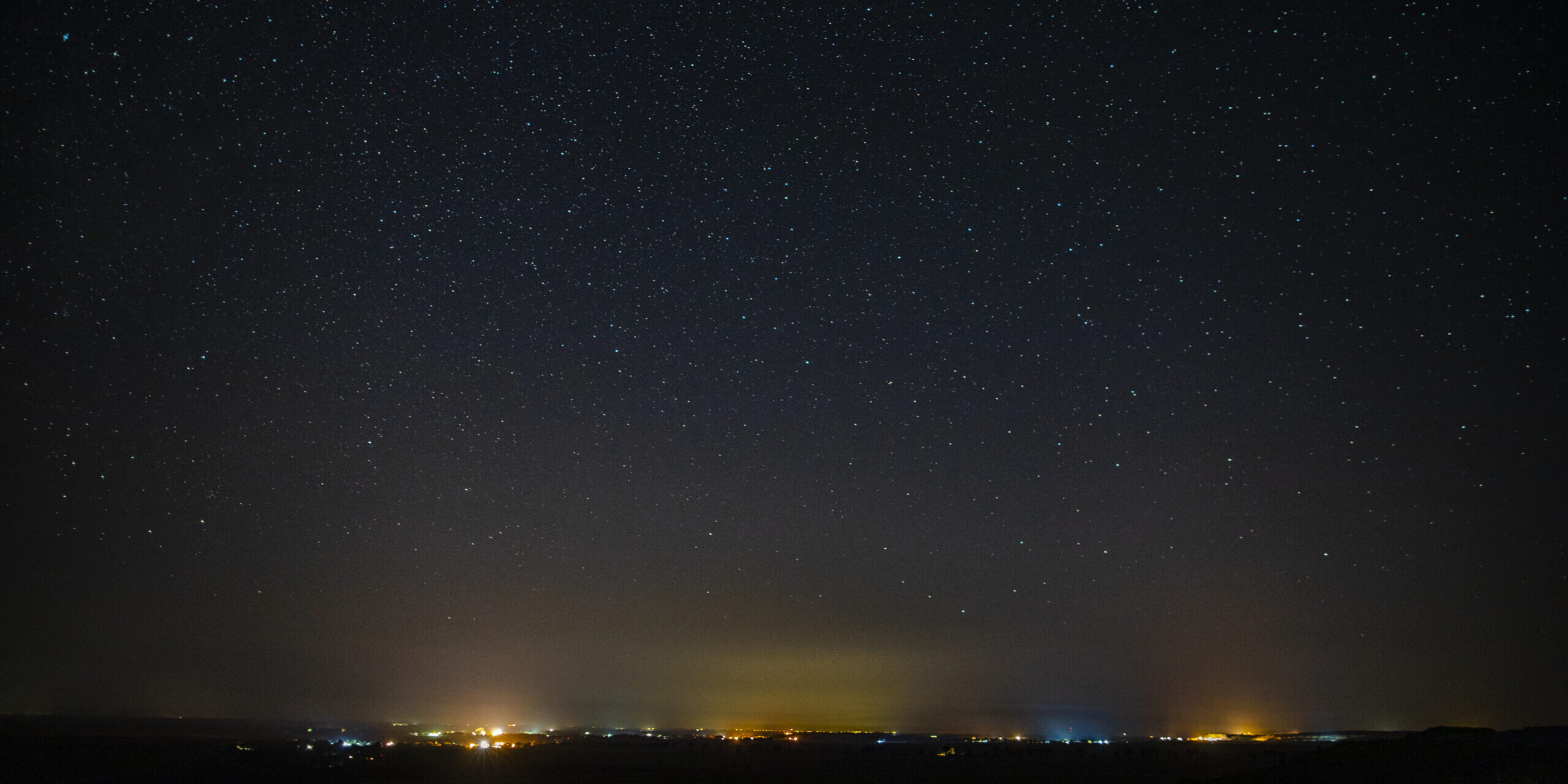Threats to the dark and quiet sky
By John Barentine
Introduction
Vincent van Gogh, Dutch post-impressionist painter, once wrote, “the sight of the stars always makes me dream.” For generations, humans have gazed upward in wonder—but today, light pollution obscures the night sky for millions. Beyond just visible light, humanity’s presence on the electromagnetic spectrum now threatens astronomy across wavelengths, from radio to optical. As our footprint extends into space, these disruptions come from both above and below.
Addressing this challenge demands a broader approach compared to the past. The future of astronomy relies on protecting the “dark and quiet sky”—free from light and radio pollution. This can be solved by reducing interference both on Earth and in space, across the electromagnetic spectrum.
Light Pollution
Outdoor light on Earth’s surface travels upward, either directly or after reflecting off the ground. While most escape into space, some scatter in the atmosphere and return to the ground as “sky glow”. This scattered light reduces the contrast of celestial objects against the night sky, diminishing the visibility of stars to the naked eye.
For telescopic observations, sky glow competes with faint light of astrophysical sources, reducing the signal-to-noise (S/N) ratio. Since the required exposure time scales with the square of the S/N ratio in the photon noise conditions, sky glow significantly increases exposure time needed for quality ground-based observations.
Effective legislation can mitigate sky glow. Chile has implemented national lighting standards that limit blue light emissions—which are more prone to Rayleigh scattering and encourage redder lighting. In the US, regional policies protect areas near observation sites.
However, sky glow crosses political borders, travelling hundreds of kilometers away. Its spread is worsened by uncoordinated regulations and the widespread use of bright white LEDs. A 2023 Science study reported an average of 7-10% annual increase in global night sky brightness from 2011 to 2022.
To escape light pollution, observatories have traditionally been built by astronomers in remote areas. But the global surge in LED lighting now threatens even legislation protected sites. Major observatories in Chile—such as the Very Large Telescope, Vera C. Rubin Observatory, Giant Magellan Telescope, and Extremely Large Telescope—are affected, despite billions of dollars in public investment.
Radio Interference
The radio spectrum, spanning roughly 8 KHz to 3000 GHz, is internationally regulated, with specific bands reserved for radio astronomy. These protected frequencies lie near those used for terrestrial and space-based communications, making them vulnerable to interference. Such interference poses a growing challenge for noise-limited observations, especially with the rise of ultrasensitive radio receivers used in studies related to the cosmic microwave background.
Regulatory bodies aim to balance the needs of astronomers with those of commercial and military users. A common solution is to establish radio observatories in radio quiet zones (RQZs), where radio emissions are heavily restricted. In the US, the National Radio Quiet Zone covers 34,000 km² around the Green Bank Observatory and US Navy receiving facilities in West Virginia.
However, the rapid expansion of commercial radio spectrum use—particularly from satellites that emit in the protected bands or connect directly with mobile phones—threatens the effectiveness of RQZs and increases sky radio noise worldwide.
Space Objects
Since the launch of the first satellite in 1957, space objects—including satellites and debris—have impacted astronomical observations in multiple ways beyond radio interference. Satellites and rocket debris remain visible after sunset and before sunrise, appearing as points of light in the sky, obscuring astronomical objects or leaving streaks in telescope images, causing data loss.
Small debris, whether from shedding or collisions of space objects, not only risks damaging other satellites but also contributes to a new form of sky glow by reflecting light and brightening the night sky background.
For decades, the number of large space objects grew slowly, but that changed in 2019 with the rise of mega constellations—massive fleets of satellites designed for global telecommunications. Simulations show these constellations could severely disrupt ground-based astronomy unless their brightness in optical, infrared, and radio wavelengths are properly managed. Some major commercial space operators have taken voluntary steps by using less reflective materials or modifying satellites’ orbits—but challenges remain unsolved.
The steps to a solution
Astronomers have been aware of light pollution’s effects since the 18th century but only began organised efforts in the 1980s (see Physics Today, December 1984, page 63.) Early actions focused on promoting astronomy-friendly lighting such as low-pressure sodium lamps and enacting local regulations, such as limiting billboard lighting. They also successfully lobbied for the creation of RQZs to protect radio astronomy.
With the emergence of large satellite constellations, astronomers in turn advocate by collaborating with commercial satellite operators to reduce their impact on astronomy through innovations in satellite design and operations.
In a 2021 conference, the Dark and Quiet Skies for Science and Society report was published. It outlined the threats of light pollution to astronomy, ecosystems, and human health. It recommended measures like limiting artificial light use, restricting certain wavelengths, and using shields for the downward-direction of light.
The vision of a dark, quiet sky—essential for both scientific discovery and human inspiration—drives ongoing efforts to mitigate electromagnetic pollution. Protecting the night sky is now part of a broader responsibility to care for our shared environment, extending from Earth into space.


